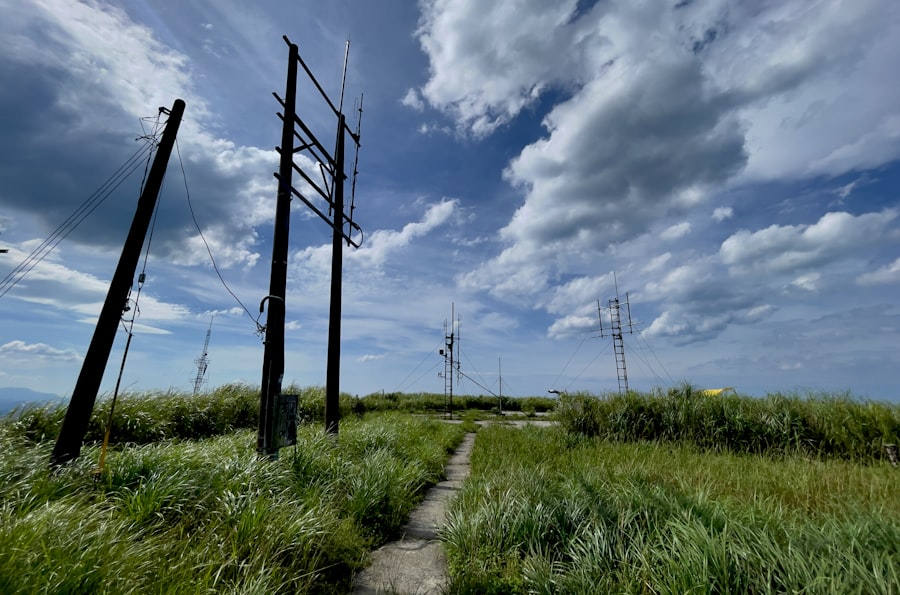In the realm of private equity, the utility exit strategy represents a critical component of investment planning and execution. This strategy involves the systematic approach to divesting from utility investments, which can include energy, water, and other essential services. The primary goal of a utility exit strategy is to maximize returns while minimizing risks associated with market fluctuations and regulatory changes.
Investors in this sector must navigate a complex landscape that includes not only financial metrics but also social and environmental considerations. Understanding the nuances of utility exit strategies is essential for private equity firms aiming to optimize their portfolios. The utility sector is characterized by its unique attributes, such as stable cash flows and long-term contracts, which can provide a solid foundation for investment.
However, the exit strategy must be carefully crafted to align with the specific dynamics of the utility market. Factors such as technological advancements, shifts in consumer demand, and evolving regulatory frameworks can significantly impact the timing and method of exit. Therefore, private equity firms must remain vigilant and adaptable, continuously assessing their strategies to ensure they are well-positioned to capitalize on opportunities as they arise.
Key Takeaways
- A clear understanding of utility exit strategies is crucial for maximizing private equity returns.
- Regulatory environment and market timing significantly impact the success of utility exits.
- Operational efficiency and value-add initiatives can enhance investment performance.
- Risk mitigation and financial engineering are key to optimizing exit outcomes.
- Exploring diverse exit options like IPOs, M&A, and secondary sales broadens strategic opportunities.
Identifying Key Factors for Maximizing Returns in Utility Investments
Maximizing returns in utility investments requires a comprehensive understanding of several key factors that influence performance. One of the most significant elements is the regulatory environment, which can dictate pricing structures, operational practices, and investment incentives. Private equity firms must stay informed about changes in regulations that could affect their investments, as these can have profound implications for profitability.
Additionally, understanding the competitive landscape is crucial; firms must analyze how their investments stack up against peers and identify areas where they can gain a competitive edge. Another critical factor is the operational efficiency of utility assets. Investments that are managed effectively can yield higher returns through cost savings and improved service delivery.
This includes optimizing maintenance schedules, investing in technology to enhance service reliability, and implementing best practices in resource management. By focusing on operational excellence, private equity firms can not only improve their current returns but also position their investments favorably for future exits.
Evaluating the Regulatory Environment for Utility Exit Strategies

The regulatory environment plays a pivotal role in shaping utility exit strategies within private equity. Regulations governing utilities can vary significantly by region and can impact everything from pricing to operational mandates. For private equity firms, understanding these regulations is essential for making informed investment decisions and planning successful exits.
Regulatory changes can create both opportunities and challenges; thus, firms must be proactive in monitoring legislative developments that could affect their investments. Moreover, engaging with regulatory bodies and stakeholders can provide valuable insights into upcoming changes and trends. By fostering relationships with regulators, private equity firms can better anticipate shifts in policy that may influence their exit strategies.
This proactive approach not only aids in compliance but also positions firms to advocate for favorable conditions that could enhance the value of their utility investments at the time of exit.
Leveraging Operational Efficiency to Enhance Returns in Utility Investments
| Metric | Description | Impact on Operational Efficiency | Effect on Investment Returns |
|---|---|---|---|
| Asset Utilization Rate | Percentage of time utility assets are actively generating output | Higher utilization reduces idle time and maximizes output | Increases revenue potential and return on capital employed |
| Operating Expense Ratio | Operating expenses as a percentage of total revenue | Lower ratio indicates better cost control and efficiency | Improves net margins and overall profitability |
| System Reliability Index | Frequency and duration of outages or service interruptions | Higher reliability reduces downtime and maintenance costs | Enhances customer satisfaction and reduces penalty risks |
| Energy Loss Percentage | Energy lost during transmission and distribution | Lower losses indicate efficient infrastructure and operations | Increases effective energy sales and revenue |
| Return on Invested Capital (ROIC) | Net operating profit divided by invested capital | Reflects efficiency in using capital to generate profits | Direct measure of investment performance and value creation |
| Maintenance Cost per Unit | Maintenance expenses divided by units of energy produced | Lower costs indicate efficient maintenance practices | Reduces operational costs and improves margins |
| Capital Expenditure Efficiency | Output or capacity gained per unit of capital spent | Higher efficiency means better use of investment funds | Accelerates payback period and enhances returns |
Operational efficiency is a cornerstone of maximizing returns in utility investments. Private equity firms that prioritize efficiency can significantly enhance the profitability of their portfolio companies. This involves a thorough analysis of existing operations to identify inefficiencies and areas for improvement.
Implementing advanced technologies, such as smart grid systems or predictive maintenance tools, can lead to substantial cost reductions and improved service reliability. Furthermore, fostering a culture of continuous improvement within utility companies is essential for sustaining operational efficiency over time. This includes training employees on best practices, encouraging innovation, and regularly reviewing performance metrics to identify areas for enhancement.
By embedding operational excellence into the fabric of utility investments, private equity firms can create lasting value that not only boosts returns but also makes their assets more attractive during exit negotiations.
Assessing Market Conditions and Timing for Utility Exit Strategies
Market conditions play a crucial role in determining the optimal timing for utility exit strategies. Private equity firms must conduct thorough market analyses to identify trends that could impact their investments. Factors such as interest rates, energy prices, and economic growth rates can all influence the attractiveness of an exit at any given time.
By staying attuned to these market dynamics, firms can make informed decisions about when to divest their utility assets. Timing is often as important as the decision to exit itself; selling during a market upswing can yield significantly higher returns than exiting during a downturn. Therefore, private equity firms should develop robust forecasting models that incorporate various economic indicators to guide their exit timing decisions.
Additionally, maintaining flexibility in their exit strategies allows firms to adapt to changing market conditions and seize opportunities as they arise.
Implementing Value-Add Initiatives to Optimize Utility Investments

Value-add initiatives are essential for optimizing utility investments and enhancing overall returns.
Private equity firms should focus on identifying specific areas where they can add value to their portfolio companies, whether through operational improvements or strategic partnerships.
For instance, investing in renewable energy sources or energy efficiency programs can not only reduce operational costs but also align with growing consumer demand for sustainable practices. By proactively implementing value-add initiatives, private equity firms can increase the attractiveness of their utility investments, making them more appealing to potential buyers during an exit process. This strategic focus on value creation ultimately leads to enhanced returns and a more successful exit strategy.
Mitigating Risks and Uncertainties in Utility Exit Strategies
Mitigating risks and uncertainties is a fundamental aspect of developing effective utility exit strategies in private equity. The utility sector is inherently subject to various risks, including regulatory changes, market volatility, and technological disruptions. To navigate these challenges successfully, private equity firms must adopt a comprehensive risk management framework that identifies potential threats and outlines strategies for mitigation.
One effective approach is diversifying investments across different types of utilities or geographic regions to spread risk. Additionally, conducting thorough due diligence before making investment decisions can help identify potential pitfalls early on. By proactively addressing risks and uncertainties, private equity firms can enhance the stability of their utility investments and improve their chances of achieving favorable exits.
Utilizing Financial Engineering to Enhance Returns in Utility Investments
Financial engineering plays a vital role in enhancing returns on utility investments within private equity. This involves employing sophisticated financial techniques to optimize capital structures, manage cash flows, and improve overall financial performance. By leveraging financial engineering strategies, private equity firms can create more efficient capital allocation models that maximize returns while minimizing risks.
For example, utilizing debt financing strategically can amplify returns on equity by allowing firms to invest more capital into growth initiatives without diluting ownership stakes. Additionally, employing hedging strategies can protect against fluctuations in energy prices or interest rates that could adversely affect cash flows. By integrating financial engineering into their investment strategies, private equity firms can unlock additional value from their utility assets.
Exploring Exit Options for Utility Investments: IPOs, M&A, and Secondary Sales
When it comes time to exit utility investments, private equity firms have several options at their disposal, including initial public offerings (IPOs), mergers and acquisitions (M&A), and secondary sales. Each option presents unique advantages and challenges that must be carefully considered based on market conditions and the specific characteristics of the investment. IPOs can provide significant capital influxes and enhance visibility for utility companies; however, they also come with increased scrutiny from regulators and investors alike.
On the other hand, M&A transactions may offer quicker exits with potentially less regulatory burden but require careful negotiation to ensure fair valuations. Secondary sales allow for flexibility in timing but may not always yield optimal returns compared to other exit strategies. By thoroughly evaluating these options, private equity firms can select the most suitable exit strategy that aligns with their investment goals.
Case Studies: Successful Utility Exit Strategies in Private Equity
Examining case studies of successful utility exit strategies provides valuable insights into best practices within the private equity sector. One notable example is a private equity firm that invested in a regional electric utility company focused on renewable energy sources. Through strategic operational improvements and value-add initiatives such as expanding solar energy capacity, the firm was able to significantly enhance the company’s profitability over several years.
When it came time to exit, the firm opted for an IPO due to favorable market conditions and strong investor interest in sustainable energy solutions. The IPO not only generated substantial returns for investors but also positioned the utility company as a leader in the renewable energy space. This case illustrates how a well-executed exit strategy can capitalize on market trends while delivering exceptional value to stakeholders.
The Future of Utility Exit Strategies in Private Equity: Trends and Opportunities
Looking ahead, the future of utility exit strategies in private equity is poised for transformation driven by emerging trends and opportunities.
This shift presents new avenues for value creation through innovative technologies and business models that prioritize environmental stewardship.
Additionally, advancements in digitalization and data analytics are reshaping how utilities operate and interact with consumers. Private equity firms that embrace these technological trends will likely find enhanced opportunities for optimizing their investments and executing successful exit strategies. By staying ahead of industry developments and adapting their approaches accordingly, private equity firms can position themselves favorably within the evolving landscape of utility investments.
In conclusion, navigating the complexities of utility exit strategies requires a multifaceted approach that encompasses understanding market dynamics, regulatory environments, operational efficiencies, risk management, financial engineering, and strategic exit options. By leveraging these elements effectively, private equity firms can maximize returns on their utility investments while positioning themselves for future success in an ever-changing landscape.
In the realm of private equity, understanding exit strategies is crucial for maximizing returns, particularly in the utility sector. A related article that delves into various exit strategies and their implications can be found at this link. This resource provides valuable insights into how private equity firms can effectively navigate the complexities of exiting utility investments, ensuring a successful transition and optimal financial outcomes.
WATCH THIS! The Debt Trap: Why Private Equity Wants Your Power Company
FAQs
What is a private equity utility exit strategy?
A private equity utility exit strategy refers to the planned approach a private equity firm uses to sell or divest its investment in a utility company. This strategy outlines how the firm intends to realize returns on its investment, typically through methods such as initial public offerings (IPOs), trade sales, secondary buyouts, or recapitalizations.
Why do private equity firms invest in utility companies?
Private equity firms invest in utility companies because these businesses often provide stable cash flows, regulated revenue streams, and long-term growth potential. Utilities are essential services with relatively predictable demand, making them attractive for private equity investors seeking steady returns.
What are common exit routes for private equity investments in utilities?
Common exit routes include selling the utility to a strategic buyer (trade sale), taking the company public through an IPO, selling to another private equity firm (secondary buyout), or recapitalizing the company to return capital to investors while retaining some ownership.
How does market regulation impact the exit strategy for utility investments?
Market regulation can significantly influence exit strategies because utilities operate in heavily regulated environments. Regulatory approvals may be required for sales or IPOs, and changes in regulation can affect the valuation and attractiveness of the utility to potential buyers.
What factors determine the timing of a private equity exit in the utility sector?
Timing depends on factors such as market conditions, regulatory environment, the utility’s financial performance, growth prospects, and the private equity firm’s investment horizon. Firms aim to exit when valuations are favorable and the company is well-positioned for future growth.
Can private equity firms exit utility investments through dividend recapitalizations?
Yes, dividend recapitalizations are sometimes used as a partial exit strategy, allowing private equity firms to extract cash by refinancing the utility’s debt and paying dividends, while still maintaining ownership.
What role do strategic buyers play in private equity utility exits?
Strategic buyers, such as larger utility companies or infrastructure investors, often seek acquisitions to expand their market presence or achieve synergies. They are common exit partners for private equity firms looking to sell utility investments.
Are there risks associated with exiting utility investments?
Yes, risks include regulatory changes, market volatility, unfavorable economic conditions, and operational challenges within the utility. These factors can affect the valuation and timing of the exit.
How do private equity firms prepare a utility company for exit?
Preparation involves improving operational efficiency, ensuring regulatory compliance, strengthening financial performance, and positioning the company to appeal to potential buyers or public market investors.
Is an IPO a common exit strategy for private equity investments in utilities?
While IPOs can be an effective exit strategy, they are less common in utilities compared to other sectors due to regulatory complexities and market conditions. However, when market conditions are favorable, IPOs can provide liquidity and valuation benefits.
